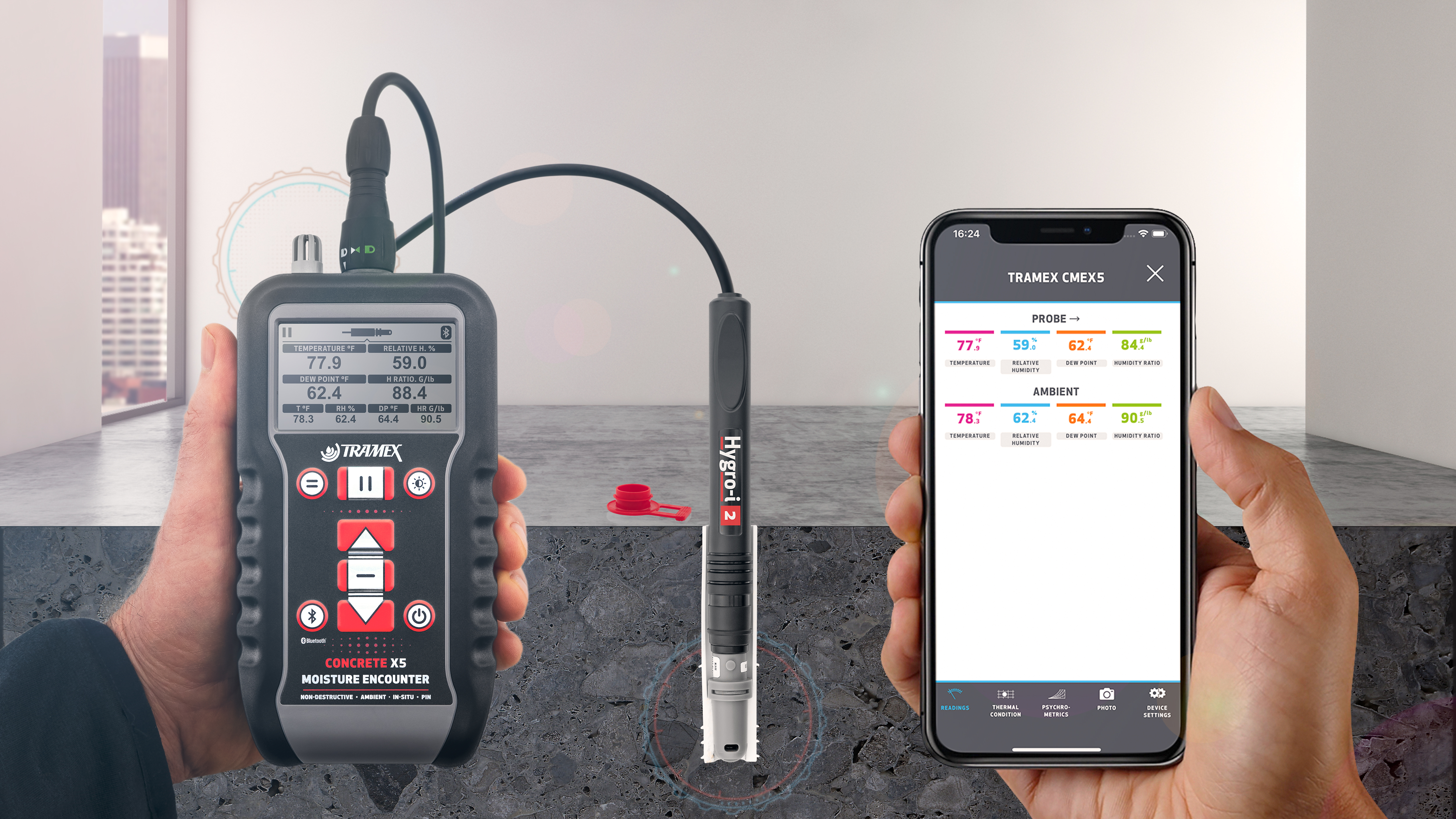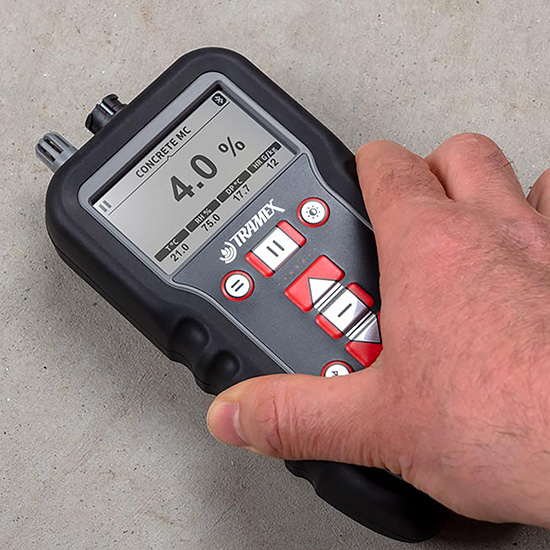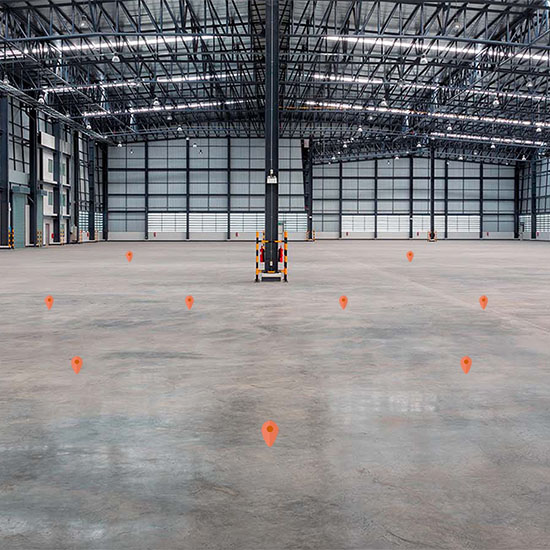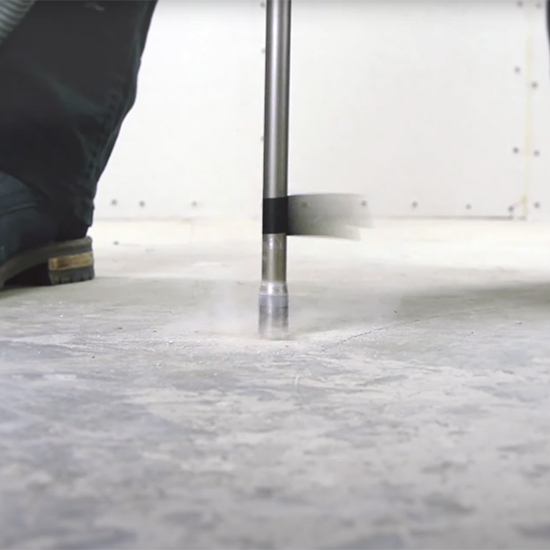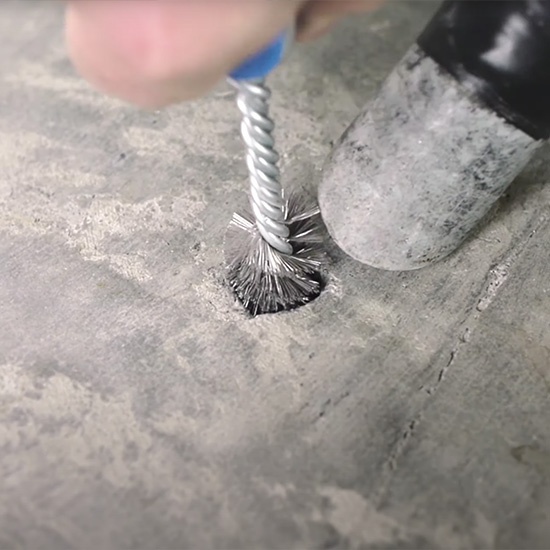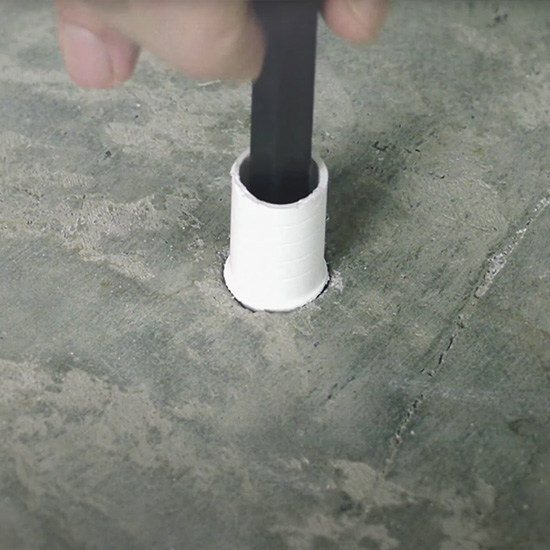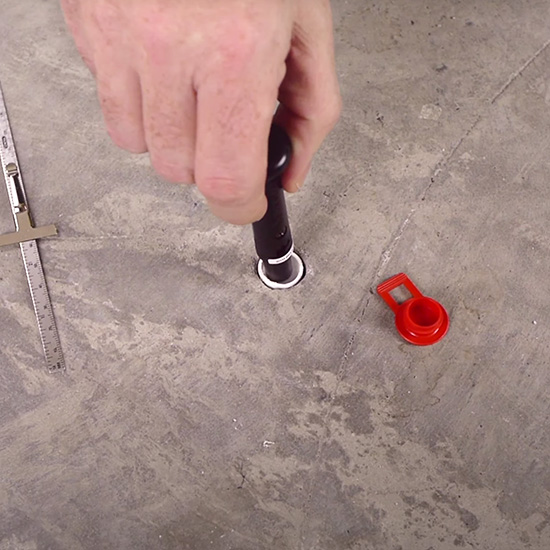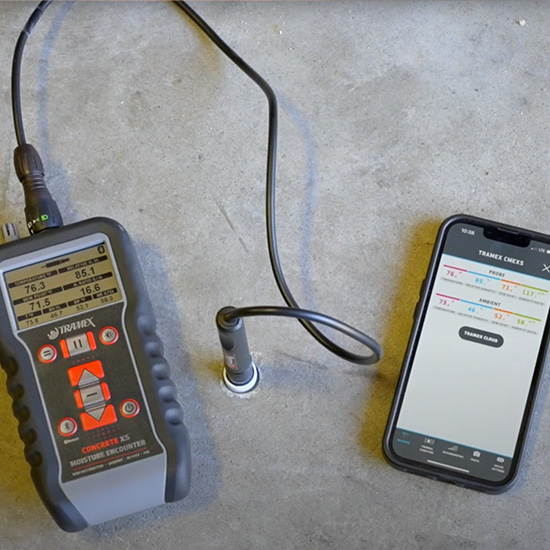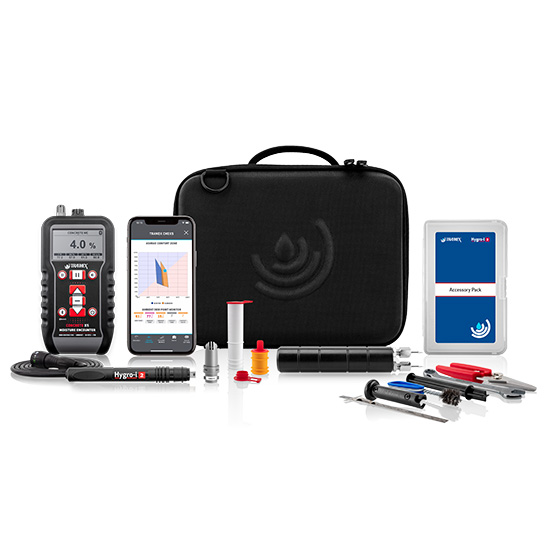Determine the locations for the ASTM F2170 in-situ RH test
As per ASTM F2170, the in-situ Relative Humidity test requires a hole to be drilled into the concrete slab.
Before drilling, it is necessary to locate the best spot on the slab to perform the test.
This is typically determined by the results of the non-destructive impedance tests, which indicate moisture content values in different areas of the slab. To find out how to perform an impedance test, click here.
Generally, areas with the highest moisture content value are deemed suitable for conducting the in-situ RH test, also known as the concrete humidity test.
